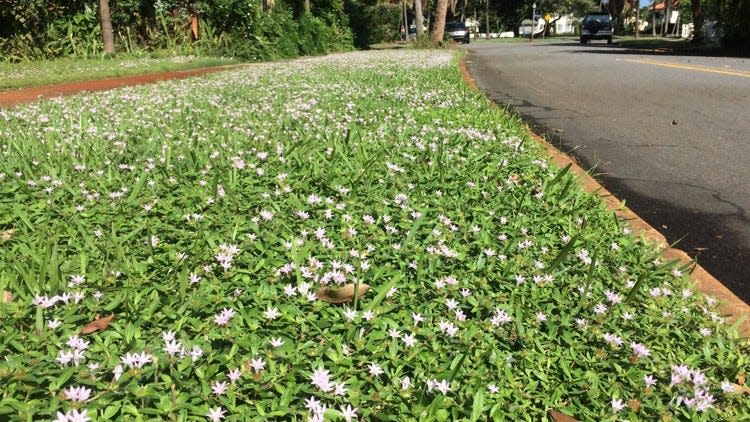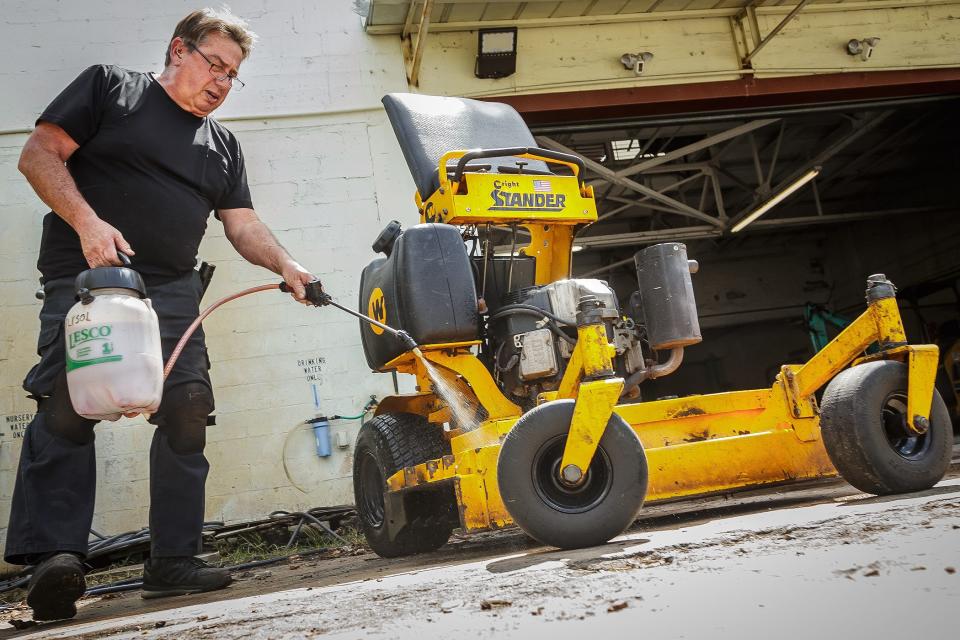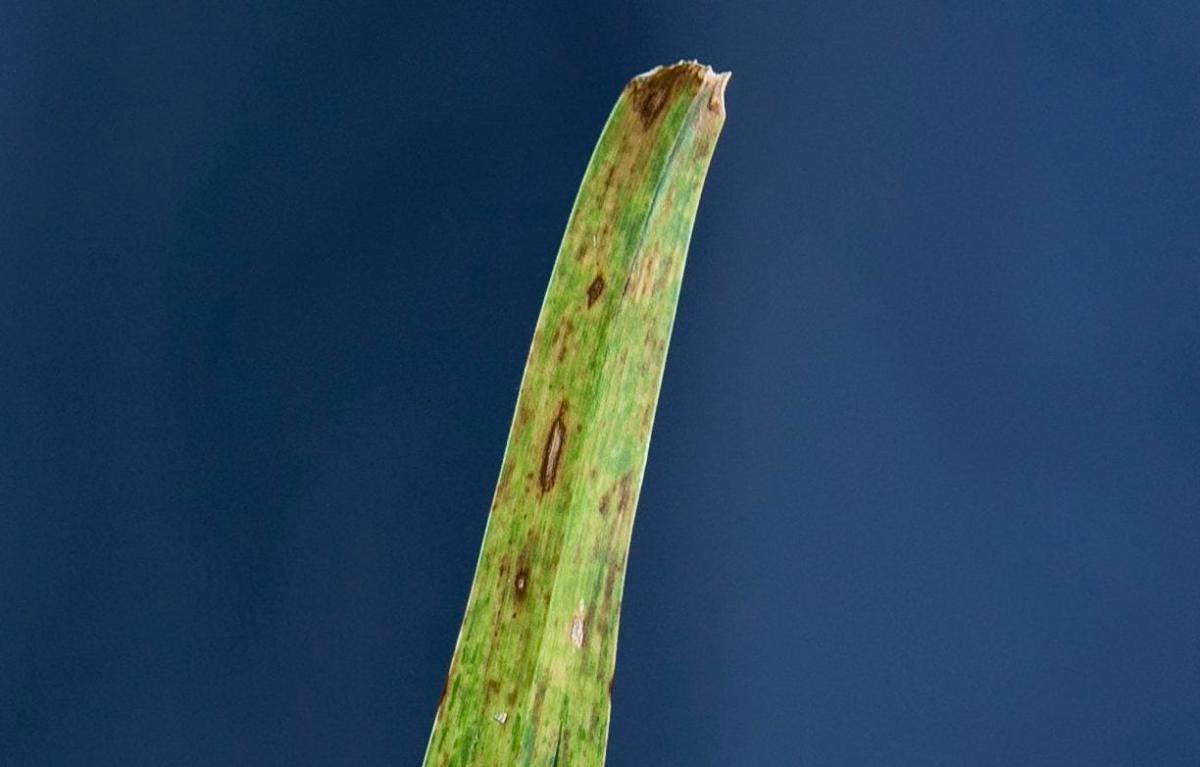It is fundamentally just turf, but there is a point of pride taken in its appearance. It is a neighborhood attraction or detraction, and a fundamental piece of the idealized dream of a house and a front yard scattered with toys and a dog lounging in the sun.
And it is possible in South Florida where a subtropical climate encourages plants to prosper with a year-round growing season, plentiful sunshine and more than 50 inches of rain on average per year. But there are tips and tricks to attaining the perfect stretch of emerald bliss, and they start with picking the right kind of grass for where you live.
University of Florida horticultural experts divide the state into three general zones that include the Panhandle, Central Florida and South Florida, which begins at about Vero Beach.
What is the best lawn for South Florida?
St. Augustine grass is commonly used in South Florida because it is a warm-season grass that grows well in neutral soil, and can tolerate partial shade as well as full sun, said Marco Schiavon, an assistant professor at UF’s Fort Lauderdale Research and Education Center who specializes in turf grass.
If your lawn gets mostly sunshine, there are more drought-tolerant grasses that can be used, including Bermuda grass and Bahia grass. But both Bermuda and Bahia can require more maintenance.
Bermuda grass likes soil that is higher in nitrogen. It should be cut at a height of 1 to 2 inches, which could mean mowing more than once a week during the rainy season. Bahia grass prefers acidic soils and should be kept at a height of 3 to 4 inches. Most South Florida soil is neutral, which is considered as having a value of 7 on the pH scale.
They call them the Shirleys: How robot lawn mowers in one West Palm Beach community help fight climate change
How often should I mow my grass?
Grass generally should be mowed so that no more than about 30% of the leaf blade is removed to ensure photosynthesis can occur. For example, if St. Augustine grass is kept at 4 inches, it should be mowed before it reaches a height above 6 inches. Schiavon recommends mowing when it reaches 5.2 inches.
More frequent mowing will likely be needed during the summer rainy season. Over-mowing grass can scalp your lawn and leave it vulnerable to weeds, pests and fungus.
UF recommends leaving grass clippings on the lawn to allow nitrogen to be absorbed back into the soil.
![A lawn fungus in Valencia Lakes development in Boynton Beach that has been killing lawns on April 24, 2019 in Boynton Beach, Florida. [GREG LOVETT/palmbeachpost.com]](https://s.yimg.com/ny/api/res/1.2/muFHak3LmYeOaFBGX2W4tg--/YXBwaWQ9aGlnaGxhbmRlcjt3PTk2MDtoPTYxMw--/https://media.zenfs.com/en/palm-beach-daily-news/99716f727f5a6f8727ed4b2bd732d6cf)
Can I mow my grass when it’s wet?
It’s better to mow grass when it is dry to avoid clippings clogging the mower. It can also be more difficult to get an even cut if grass is wet.
When should I fertilize my South Florida lawn?
With South Florida’s lengthy growing season, grass can be fertilized year-round, but Schiavon doesn’t recommend fertilizing during the cooler winter months when the grass isn’t growing as much. Also, many municipalities have rules against fertilizing during the rainy season to avoid tainted runoff going into canals and waterways.
“Don’t despair. You can fertilize in late spring and early fall if there is a summer blackout period,” Schiavon said.
Rainy season restrictions: Palm Beach to impose seasonal fertilizer restrictions beginning June 1
How do I deal with weeds in my South Florida lawn?
Although arduous, hand-picking weeds from your lawn is always an option, there are also homemade weed killers such as applying a mixture of vinegar, salt and dish soap to a weed, but that could also kill the grass, and Schiavon said that the efficacy of DIY weed killers is questionable.
He said chemical herbicides that can be bought at the store are safe to use as long as the rules on the label are followed closely.


Using a product that combines a weed killer with a grass fertilizer isn’t recommended because “when you try to take care of two issues at once, there are high chances you may mess up both things,” Schiavon said.
Restricted herbicides should be used and applied only by professionals who hold a public applicator license, which are regulated by the Florida Department of Agriculture and Consumer Services and can be obtained after passing an exam.
What is the biggest mistake people make with their South Florida lawn?
Overwatering is one of the biggest mistakes people make with their lawn, Schiavon said.
“A lot of people do not want to deal with their irrigation system, so they set it and forget it and it’s mostly going off for 15 minutes per night and that is really bad,” he said.
Instead, people should only water when the lawn starts to show signs of stress. Signs of stress in St. Augustine grass include blades turning a grayish color and starting to roll or curl. Sensors that detect moisture levels in soil can be purchased for less than $10 on Amazon.


How do I treat for pests in my lawn such as chinch bugs?
Chinch bugs are a frequent pest in St. Augustine grass, causing yellow and brown patches that can begin in areas that are over-watered. Chinch bugs can be identified by looking for tiny black-and-white colored adults on leaf blades, according to UF.
There are multiple granular and liquid chemical treatments for chinch bugs available in stores. Heavy infestations can take multiple applications of insecticides to eradicate the problem. Sodsolutions.com recommends insecticides with the chemicals trichlorfon (for extreme infestations), bifenthrin and carbaryl.


Lethal viral necrosis is a lawn killer
Lethal viral necrosis was first identified in Florida in 2013 and has since meant a death sentence for lawns infected with the virus. There is no cure, which means lawns typically have to be replaced.
Symptoms of lethal viral necrosis can be hard to detect. They include streaks of yellow or brown on grass blades, which can also signal a nutrient deficiency. It usually looks worse in winter but then appears to improve in the warmer months. But death typically occurs within three years.
Kimberly Miller is a veteran journalist for The Palm Beach Post, part of the USA Today Network of Florida. She covers real estate and how growth affects South Florida’s environment. Subscribe to The Dirt for a weekly real estate roundup. If you have news tips, please send them to kmiller@pbpost.com. Help support our local journalism, subscribe today.
This article originally appeared on Palm Beach Post: How to care for your St. Augustine grass and lawn in South Florida
